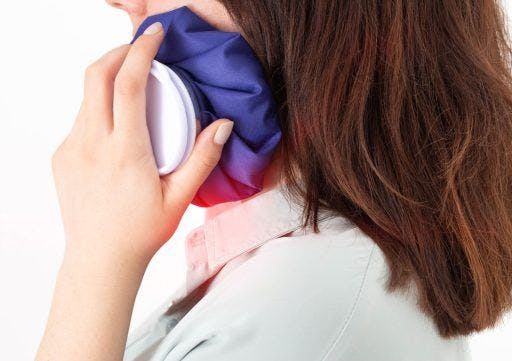Can you say temporomandibular joint fast three times? Whether you snicker, laugh, or attempt to do it, this non-scientific exercise shows this part of your jaw works well, and that’s good news for your oral health.
What is the temporomandibular joint?
The temporomandibular joint (TMJ) allows you to eat, speak, and make facial expressions. These movements function well when your teeth and jaw align correctly, ensuring the joint doesn’t receive uneven stress or pressure when you bite. If the balance is off, you may experience more complications.
The joint is on both sides of the head, just in front of the ears, where the lower jaw (mandible) connects with the skull. It also has a soft, flexible disc that acts as a cushion and distributes the forces generated during jaw movement and chewing.
Role of the temporomandibular joint
A look at the joint’s tasks explains why the Australian Journal of General Practice (AJGP) calls TMJ the “most frequently used joint in the body.”
- The TMJ’s hinge movement lets you open and close your mouth to talk, yawn, and bite into food.
- TMJ allows the lower jaw to slide forward and backwards, facilitating actions like chewing, grinding food, and moving your jaw from side to side.
- Several muscles are attached to the TMJ, including those that generate the necessary force for biting and chewing.
The TMJ sits right behind a major nerve in the face. Specifically, it’s at the centre of a network of nerves that cross and connect throughout the face, head, and neck. So, when the TMJ is affected, pain can spread throughout the eyes, ears, mouth, forehead, cheeks, tongue, teeth, and throat.
The connection between TMJ and teeth

A healthy dental occlusion – how your upper and lower teeth come together when you bite – evenly distributes the forces needed for chewing or jaw movement. An imbalance won’t always cause TMJ problems, but repeated stress can lead to jaw pain.
Whether teeth misalignment leads to temporomandibular dysfunction (TMD), a.k.a. temporomandibular disorders, has long sparked debate. While some researchers argue that misalignment of teeth directly causes TMD, newer studies believe malocclusion has no impact. The Primary Dental Journal study states that much of the reasoning behind claims of a relationship relies on anecdotal rather than scientific evidence.
Without concrete confirmation that a bad bite directly causes TMD, the National Institute of Dental and Craniofacial Research (NIDCR) strongly recommends avoiding treatments that cause permanent changes to the jaw joints, teeth, or bite or involve surgery.
Types of temporomandibular joint disorders
The National Institute of Dental and Craniofacial Research lists three main classes of TMD:
- Disorders involving the joints, including disc issues
- Disorders involving the muscles used for chewing
- TMD-associated headaches
TMD risk factors
According to the TMJ Association, findings from the OPPERA Study (Orofacial Pain Prospective Evaluation and Risk Assessment) emphasise treating TMD as more than a localised jaw or dental condition. Healthcare providers must provide a comprehensive assessment beyond oral health.
Apart from clenching and teeth grinding, the OPPERA Study reports that the presence of the following conditions strongly indicates a higher chance of developing TMD:
- Irritable bowel syndrome (IBS)
- Genital pain
- Tension-type/migraine headaches
- Frequent nausea, fatigue, or dizziness
- Poor sleep quality
Temporomandibular dysfunction symptoms
The American Academy of Otolaryngology-Head and Neck Surgery Foundation reports that temporomandibular joint pain can range from sharp and searing to dull and constant. According to the organisation, the ache occurs each time you chew, yawn, or talk.
Besides the described pain, possible temporomandibular dysfunction symptoms include:
- Temple or cheek pain
- Difficulty in opening or closing your mouth (jaw lock)
- Painful clicking, grating, or popping noise when you chew
- Frequent head/neck pain
- Ringing in the ears (tinnitus)
- A shift in teeth alignment
Share your symptoms with a healthcare provider to determine the cause. There are about 30 conditions that fall under TMD, the National Institute of Dental and Craniofacial Research says. The Australian Journal of General Practice also lists 22 medical conditions with symptoms similar to TMD, including tooth decay and tooth abscesses, sinusitis, ear infections, and rheumatoid arthritis.
Temporomandibular dysfunction self-care

How do you fix a temporomandibular joint issue? Medical professionals say jaw joint pain and other TMD symptoms can go away on their own. They prescribe the following self-remedies before pain medication or different types of treatment.
- Avoid extreme jaw movements of opening your mouth wide or forcefully, such as yawning, singing, or yelling.
- Apply a hot pack for dull steady aches or a cold pack for occasional sharp pain for 20 minutes. You can apply both alternately to the jaw.
- Eat soft foods and cut them into small pieces. Be wary of dishes and ingredients that require prolonged chewing before swallowing.
- Avoid chewing gum, clenching your jaw muscles, or biting your nails, cheeks, or lips.
- Avoid pushing your tongue against your teeth when at rest. Instead, place your tongue lightly up on the roof of your mouth.
- Find relaxation techniques or a breathing exercise to reduce stress-related teeth grinding.
- Practise doctor-approved, jaw-strengthening exercises. Try this three-step routine:
-
- Place your thumb under your chin.
- While opening your mouth, apply pressure to your chin with your thumb. Hold for 3-5 seconds before closing your mouth.
- Perform the reverse by squeezing your chin between your fingers to resist the mouth closing.
Regular dentist appointments will mean your dentist has a comprehensive knowledge of your oral health history. They can implement early intervention if they know you’re susceptible to TMD or prevent the condition from becoming chronic. Or they can determine if your concern is not TMJ-related at all.
Remember, excellent temporomandibular joint health allows you to eat, speak, and express emotions. So, schedule that dental checkup, establish a consistent oral care routine, and be mindful of TMD signs or symptoms.
References:
Al-Ani, Z. (2020). Occlusion and Temporomandibular Disorders: A Long-Standing Controversy in Dentistry. Primary Dental Journal, 9(1), 43–48.
Gauer, R. L. (2015, March 15). Diagnosis and Treatment of Temporomandibular Disorders. AAFP.
Kang, M., Park, Y. R., Huh, K., & Kho, H. (2021). Clinical characteristics of temporomandibular disorders presenting posterior open bite – A report of 12 cases. Journal of Dental Sciences, 16(3), 861–867.
Penn Medicine. (2020, September 21). TMJ and TMD: Symptoms, Relief and Self-Care [Video]. YouTube
The TMJ Association. (2021, July 27). Self Care – The TMJ Association. https://tmj.org/living-with-tmj/self-care/
The TMJ Association. (2022, August 19). Diagnosis and Related Conditions – The TMJ Association.
Temporomandibular dysfunction. (n.d.). Australian Journal of General Practice.
TMD (Temporomandibular Disorders). (n.d.). National Institute of Dental and Craniofacial Research.



